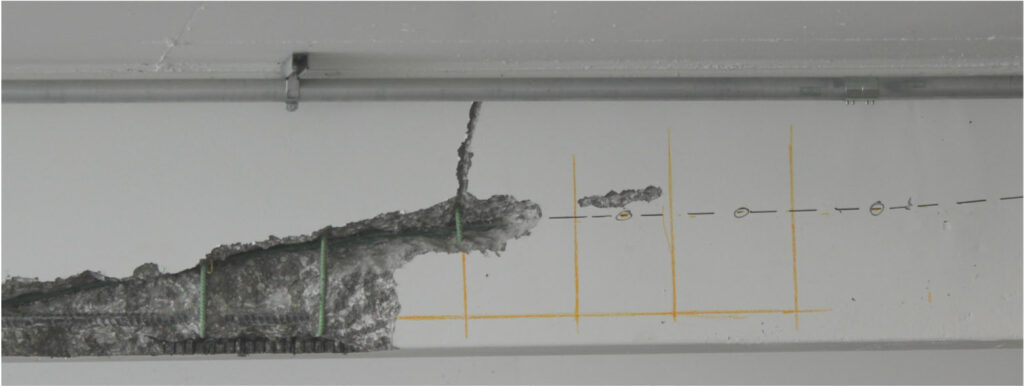RainierGPR Concrete Scanning: Accuracy and Security for Building Jobs
RainierGPR Concrete Scanning: Accuracy and Security for Building Jobs
Blog Article
The Significance of Precise Concrete Scanning in Finding Underground Hazards
The capability to precisely spot and map these below ground dangers is not just a matter of ease but an essential facet of ensuring the safety and security of both construction workers and the honesty of the job itself. By releasing sophisticated scanning technologies and techniques, experts can reveal covert risks, prevent costly damages, and eventually lead the means for smoother and safer construction ventures.
Advanced Scanning Technologies for Detection
Sophisticated radar systems are transforming the area of underground discovery by providing unequaled precision and efficiency. These sophisticated scanning technologies utilize ground-penetrating radar (GPR) to produce in-depth photos of subsurface structures, using understandings into what lies beneath the surface with impressive clearness. By discharging high-frequency pulses into the ground and measuring the reflections, radar systems can identify variants in product make-up and find below ground threats such as wires, voids, and pipelines.
Among the crucial advantages of these advanced radar systems is their non-invasive nature, permitting extensive evaluations without triggering damages to the existing structures. This not just ensures the safety of the surrounding setting but likewise minimizes the requirement for pricey repairs or disturbances to recurring construction jobs. In addition, the real-time information supplied by these scanning innovations allows fast decision-making and improves total task effectiveness.
Significance of Subsurface Mapping

Precise subsurface mapping assists in stopping pricey problems to existing below ground framework, reducing the risk of accidents, and keeping task timelines. It makes it possible for project managers to make educated decisions pertaining to website preparation, tools deployment, and resource appropriation. Additionally, subsurface mapping enables better coordination among different groups dealing with a task and aids in complying with governing needs associated with underground utility detection.
Mitigating Risks in Construction Tasks
Effective risk reduction techniques are important for making sure the success and security of building projects. One vital facet of mitigating dangers in construction tasks is thorough preparation and evaluation at the preliminary stages.
Additionally, establishing clear interaction channels among all project stakeholders and guaranteeing rigorous adherence to safety and security methods are crucial parts of danger reduction. By proactively executing durable risk reduction methods, building projects can minimize hold-ups, price overruns, and safety and security incidents, inevitably leading to effective task results.

Preventing Costly Problems and Hold-ups
To lessen financial losses and task problems, reliable methods must be applied to stop costly damages and hold-ups in construction tasks. One important means to achieve this is by conducting detailed concrete scanning prior to any excavation work begins. By making use of advanced scanning innovations such as ground-penetrating radar (GPR) view it now and electromagnetic induction, building teams can properly discover below ground threats like rebar, conduits, and various other utilities. Identifying these obstructions early helps in preparing the project design more effectively and staying clear of prospective problems throughout excavation.
In addition, spending in training programs for construction workers on the significance of concrete scanning and risk-free excavation practices can significantly reduce the risk of hold-ups and accidents. Clear interaction channels between job supervisors, designers, and on-site workers are likewise important to make sure that everyone is aware of the prospective threats and complies with the necessary procedures to stop expensive damages. By focusing on positive actions like concrete scanning and advertising a society of safety and security and recognition, building tasks can reduce the economic influence of unexpected below ground blockages and stay clear of costly hold-ups.
Ensuring Safety of On-Site Employee
By focusing on positive steps such as detailed training programs and clear communication channels, building tasks can make certain the safety and security of on-site employees in the middle of the prospective threats identified through concrete scanning. Appropriate training gears up employees with the understanding and abilities needed to navigate building websites safely, specifically when threats are determined with scanning processes. Training should cover threat acknowledgment, emergency situation procedures, and the correct application of individual protective equipment to alleviate risks effectively.
Furthermore, developing clear communication channels is important for sharing information regarding identified risks quickly. This makes sure that all on-site workers recognize possible threats and can take needed preventative measures to avoid accidents. Normal safety and security instructions, tool kit talks, and constant updates pertaining to scanning results help keep everyone notified and positive in preserving a secure functioning Recommended Reading environment.
Additionally, executing stringent adherence to safety procedures and guidelines, performing normal safety and security audits, and cultivating a society of security awareness amongst employees are essential elements in making certain the health of on-site workers during building projects - RainierGPR Concrete Scanning. my sources Proactive precaution not just secure workers from damage yet additionally add to the general success and efficiency of the project
Verdict
Utilizing advanced scanning modern technologies and subsurface mapping aids mitigate threats in building and construction tasks, avoiding pricey problems and delays. It is crucial for building firms to focus on the use of precise scanning techniques to lessen prospective risks and guarantee a smooth building and construction process.

By proactively carrying out robust threat reduction techniques, building and construction tasks can lessen hold-ups, price overruns, and safety and security cases, inevitably leading to effective project end results. - RainierGPR Concrete Scanning
To minimize monetary losses and task troubles, reliable strategies must be carried out to avoid pricey damages and delays in building and construction tasks. By focusing on aggressive procedures like concrete scanning and advertising a society of safety and security and recognition, building and construction projects can reduce the economic impact of unexpected underground obstructions and prevent costly hold-ups.
By prioritizing proactive steps such as comprehensive training programs and clear interaction networks, building and construction tasks can make sure the security of on-site workers amid the possible hazards discovered with concrete scanning. Using advanced scanning technologies and subsurface mapping helps reduce risks in construction projects, avoiding costly problems and delays.
Report this page